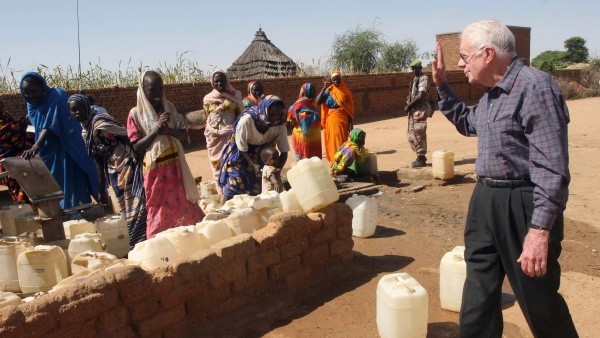In March at the Carter Center in Atlanta, South Sudan’s minister of health announced that Guinea worm transmission had been stopped within South Sudan. It has been fifteen months since the last reported case, and the disease has a life cycle of twelve months. That means the disease is gone from South Sudan, though it could be reintroduced from elsewhere. The World Health Organization is expected to certify South Sudan as free of Guinea worm. Elimination of Guinea worm is a massive, even spectacular, achievement orchestrated by an American non-governmental organization, the Carter Center, working with African ministries of health, numerous local partners, and a veritable army of village volunteers.
In 2016, there were twenty-five reported cases of Guinea worm in the world, in South Sudan, Mali, Chad, and Ethiopia, but now, the disease is found only in the last three. Those three countries have a better health infrastructure than South Sudan, with its ongoing civil war and massive displacement of population. Hence, if the disease can be eliminated in South Sudan, it is likely soon to be entirely eliminated from the face of the earth. That would make it the second human disease after smallpox to be eliminated. It is to be hoped that polio will be the third.

When the Carter Center began its campaign in 1986, there were an estimated 3.5 million cases worldwide. Present in ancient Egypt and mentioned in the Old Testament, the Guinea worm is (or was) a scourge of the poor. It is a parasite, the larvae of which are transmitted in water. After the larvae are ingested by a human body, a three-foot worm develops. The worm then makes its way out of the body through a sore, often on a foot, by excreting an acid. Guinea worm itself is not fatal, but it is excruciatingly painful, debilitating, and increases vulnerability to other diseases. There is no cure for the disease. Modern treatment is the same as it was for the ancient Egyptians: the emerging worm is carefully wrapped around a stick to prevent infection. Guinea worms can be prevented through the filtering of water. That requires a public education campaign.
The Carter Center had the imagination to take as its focus a disgusting but non-fatal disease that almost exclusively plagues the poor. With its campaign against Guinea worm, it might be argued that the Carter Center has done more than most official assistance programs to mitigate the lives of the African poor.
A UN publication announcing the end of Guinea worm in South Sudan noted that former president Jimmy Carter, the founder of the Carter Center, announced in 2015 that he had been diagnosed with cancer: “He said he was responding well to treatment and he expected to outlive the last case of Guinea worm. President Carter is now 95 and cancer-free, and Guinea worm disease just lost the fight in South Sudan.”

